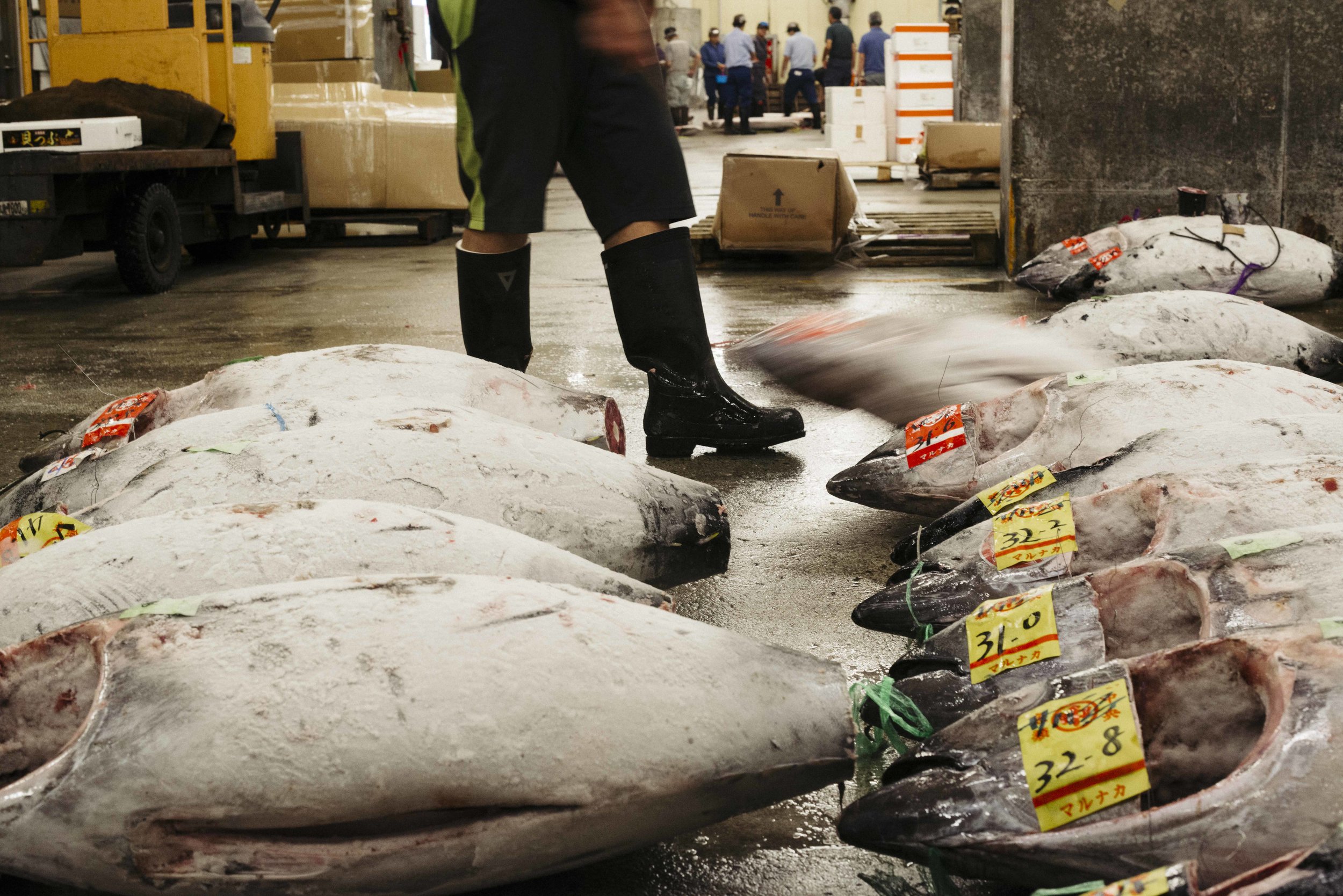Tsukiji
Tsukiji, the worlds largest fish market closed down on October 2018 after over 90 years in operation. I was fortunate enough to gain access before its closure.
More than 2,000 tonnes of seafood pass through Tsukiji’s 80-year-old halls every day. Lining these halls are over 1,200 merchant stalls which offer more than 480 kinds of seafood; eels, octopus, barracuda, puffer fish, surf clam, conger eel, lobster, squid, shrimp, salmon, mackerel, the legendary bluefin tuna and of course, whale meat. The stock is packed up in crates, wallowing in brine, or swimming in buckets. Occasionally an octopus makes one last attempt at escape, hopelessly flopping through the halls.
It’s near impossible to fathom the enormity of Tsukiji, 28 million dollars of fish sourced from over 60 countries, is sold here daily. This accounts for 90 percent if the seafood that passes through Tokyo and a third of the seafood that passes through all of Japan. Around 30 tons of tuna waste alone is created every day while the market as a whole produces 90 tons of waste a day, the equivalent of the trash generated by a city with 90,000 people.
Transporting the fish in, selling it at stalls, auctioning it off, gutting for delivery to wholesalers and restaurants and shipping it out is work force of 60,000 people equipt with 32,000 vehicles, trucks, vans, handcarts, bicycles, three-wheeled wagons and micro-trucks, built narrow enough to twist through the Tsukijis aisles, even getting snarled in traffic jams.
Here the Blue Fin Tuna dealers reign supreme as the unofficial kings of fish. Up to 2,500 tuna of 150 different grades of tuna can pass through the market in a single day. The record price stands at over $1.7m for a single 222kg fish.
When tourist first began arriving Tsukiji workers thought they were there in the early hours because they were suffering from jet lag. Due to a more recent influx of Chinese tourists, visitors began to be viewed as a menace, criticized for touching the tuna, poking them with sticks and even letting cigarette ashes fall on them. In early 2010 Tsukiji set up a viewer area at the auction that held 70 people. That idea was shelved when as many as 500 people showed up. As such visitors often find a surprising, baffling level of hostility towards them. Rules are now in place for visiting tourists.
At the coveted auctions the mood is frenetic, big money and big fish fly around. Most notably of course, is again, the Tuna. The beasts, laid out across the floor on pallets, lie frozen as men in wellington boots and dungarees trudge round, inspecting the carcass. On a small stool stands the auctioneer, his frenetic screams and shouts chase each other around the room as bells ring in the background. This form of auctioning has seen little change since the time of the markets origin.
The current market was built in 1935, but traces it roots back far further, around 600 years ago, to the early Edo period. Before Tokyo was even Tokyo in the new Japanese capital of Edo, later renamed Tokyo, the Shogun invited fisherman from Osaka to set up shop so as to meet his fish needs. Despite earthquakes, revolutions & intense war the market still stands in the same locatio. Now occupying 56 acres of prime downtown Tokyo real estate Tsukiji’s days are numbered.
Plans for a forced relocation of the market had been in place for nearly a decade, but had met steep resistance at almost every turn. The history of Japan itself is punctuated by its resistance to modernisation and Tsukiji is no different. A site, just over 2kms from the current site had been cleared for development. The older generations of market vendors stubbornly refused resettlement, preferring Tsukiji’s wet dank alleys to the spacious bright new market drawn up by developers at Toyosu Fish Market. Global Bluefin Tuna Trade
























